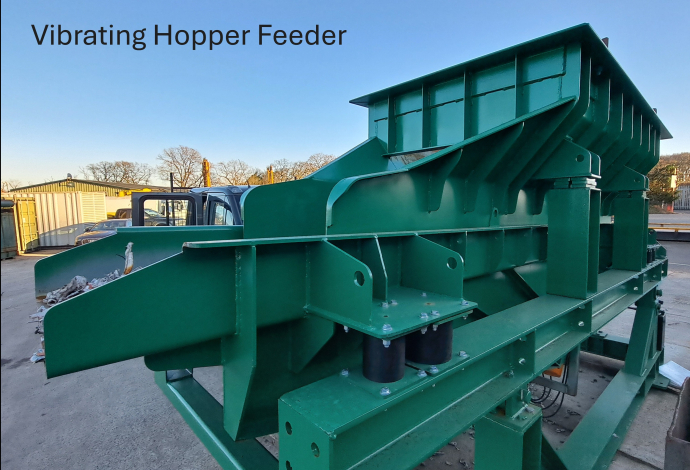What is a Vibrating Feeder and Why Does it Matter in Recycling?
16/07/2025
A vibrating feeder is a type of equipment used to transport and feed bulk materials in a controlled and consistent manner. Commonly found in industries such as mining, recycling, and aggregate processing, vibrating feeders help manage material flow between stages of a process line.

In metal recycling applications, a vibrating feeder plays a crucial role in maintaining throughput and ensuring materials are evenly distributed before they enter separation or screening systems.
How Vibrating Feeders Work
Vibrating feeders operate by using vibration to move materials along a trough or pan. The motion is typically generated by unbalanced motors or electromagnetic drives. By adjusting frequency and amplitude, the feeder can be tuned to suit different materials, from fine powders to larger, more abrasive pieces of metal.
Applications in Metal Recycling
In the recycling sector, vibrating feeders are often used to:
- Deliver consistent feed rates to eddy current separators and density separation systems
- Prevent material surges or blockages
- Improve overall plant efficiency and reduce downtime
- Handle a wide variety of feedstocks including shredded scrap, non-ferrous fractions, or incinerator bottom ash
A well-designed vibrating feeder contributes to higher recovery rates and smoother downstream processing.
Choosing the Right Vibrating Feeder for Your Process
Factors to consider when selecting a vibrating feeder include:
- Material type and particle size
- Moisture content and flow characteristics
- Required feed rate and throughput
- Integration with existing equipment
At BlakerTech, we don’t just supply standalone equipment, we design complete cascade systems incorporating vibrating feeders, hoppers, conveyors, and separators. Our team uses 3D modelling to visualise equipment layout, calculate overall footprint, and ensure compatibility with existing infrastructure.
Whether you're designing a new line or upgrading an existing system, correct feeder selection and system integration are key to achieving reliable, high-performance results.
Final Thoughts
While often overlooked, vibrating feeders are essential components in modern recycling systems. By maintaining steady material flow and preventing bottlenecks, they help ensure separation technologies like eddy current separators and fluidised bed systems operate at peak efficiency.
If you're reviewing your recycling process and would like to explore where vibrating feeders, or complete cascade systems, might add value, we’d be happy to share insight from our experience.


